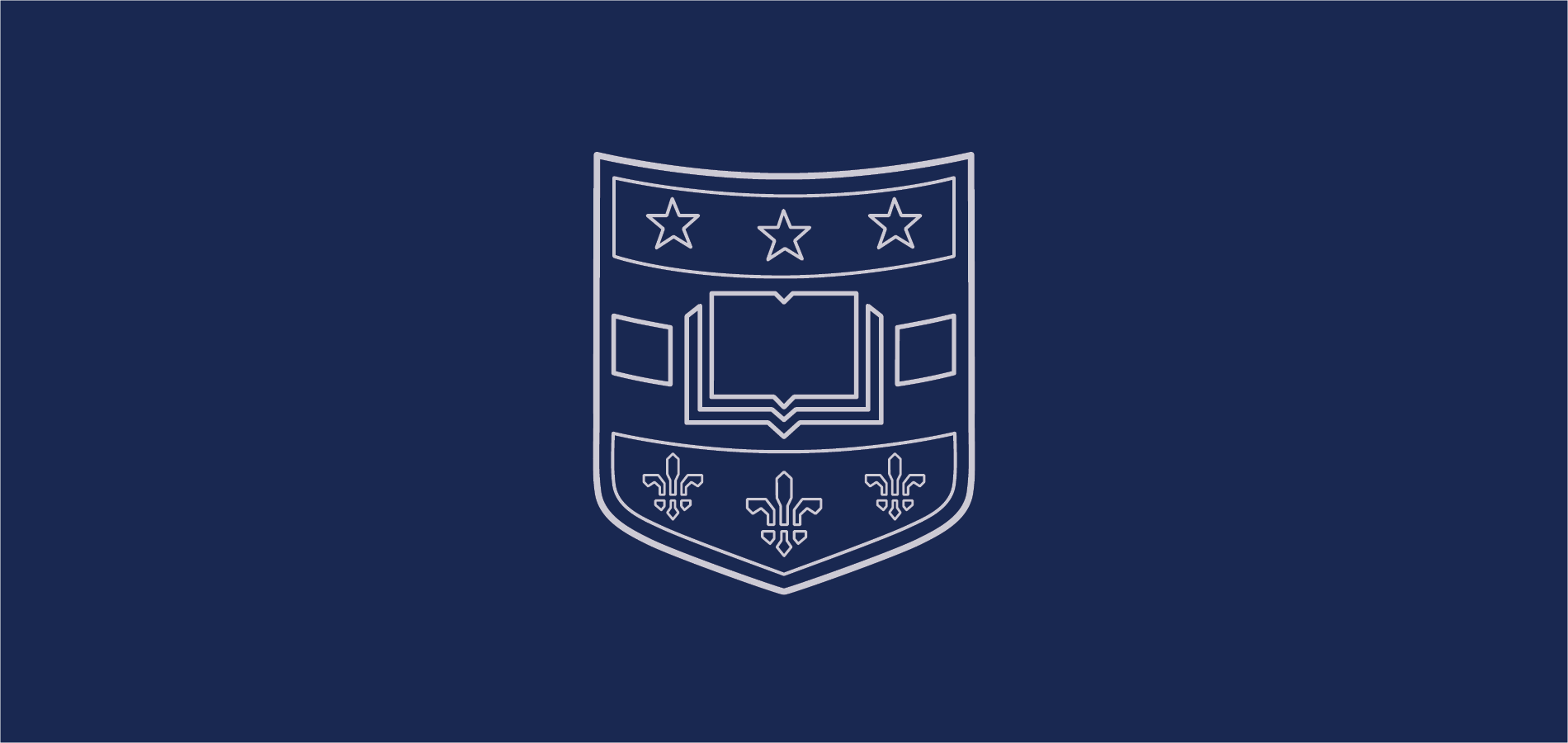
Bizarre but True Happenings at the 1904 Olympics in St. Louis
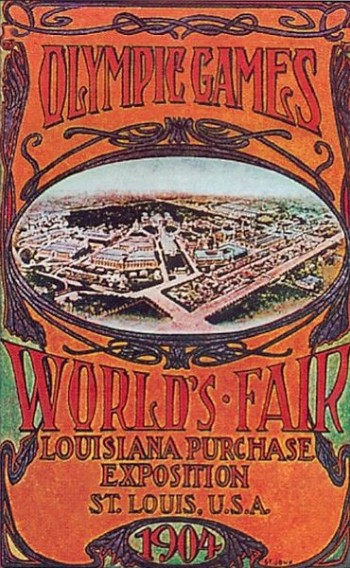
In 1904, St. Louis hosted the third ever Olympics, held in conjunction with the World’s Fair. In contrast to today’s Games, however, the contests at that time ranged from the familiar to the outright bizarre. The third Olympiad, the first to be held in the western hemisphere, had barely any regulations and was mostly a complete free for all. Contestants could join at any time, even from right off the street. Newspaper coverage of the competitions tended to be spotty and contradictory, making it hard to know anything conclusive about that hot and dusty summer. However, sports historians can safely say that more world records were created in 1904 than the two previous Olympics in Athens and Paris, some remaining uncontested.
However, it wasn’t supposed to be that way. The Olympics were originally slated to take place in Chicago, but former Missouri governor and organizer David Francis, with a little help from President Theodore Roosevelt, staged a coup. He argued that since St. Louis was already hosting the World’s Fair, meant to commemorate the centennial anniversary of the Louisiana Purchase, no one would bother attending the Olympics in Chicago. Francis won the day, and the Games were moved to St. Louis.
Most Olympic contests were held at the future Danforth Campus. Washington University constructed the buildings in Brookings quadrangle and leased them to the Louisiana Purchase Exposition for use by the World’s Fair. From Brookings, an oak-lined walkway led to Francis Field and Gymnasium, an area to be used exclusively for the Games.
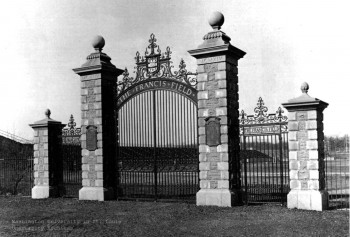
A lot of attention was given to the construction of what would soon be Washington University’s sports facilities. As David Francis told Everybody’s Magazine, “We shall present the quadrennial Olympian Games….The sum of $150,000 has been appropriated for the purpose, a great gymnasium has been built, and a stadium erected with a seating capacity of 15,000. Of course, the programme of sports will be more comprehensive than that provided for the original Olympiad, but this is necessitated by modern conditions.”
The Games lacked an international character, as most foreign competitors found the voyage to the land-locked Midwestern city too daunting. Out of the estimated 600 Olympians, 580 of them were American. Most participants were actually locals, some even gold medal winners. The events were spread out over six months with one contest happening every day, but the bulk of them occurred between August 29th and September 3rd.
At times, World’s Fair events blended with the Olympics, allowing for some very unusual contests to be integrated with more familiar activities on the program. For instance, basketball, water polo, high jump, and pole vaulting coincided with International Tug of War, Gaelic football and something called Indian club swinging.
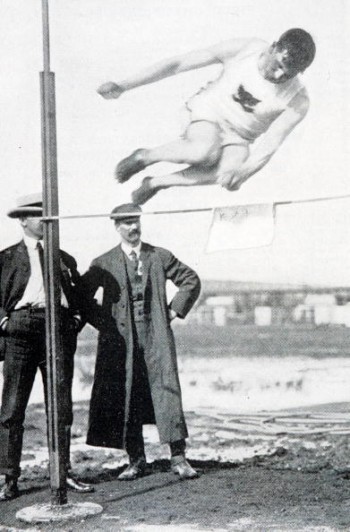
And then there were the “Anthropology Days.” Held on August 12th and 13th , the Days were inspired by the prevailing social Darwinism ideology of the time; the planners paid indigenous peoples (already employed as human exhibits at the Fair) to compete in European-style sporting events like discus throwing and high jump, and collected data on their athletic performance so as to prove white physical superiority.
As Francis stated in the Olympics’ program, “The national sports of the different countries of the world will also be studied with reference to their significance as reflecting the type of people among which they have received their highest development. In this way it is expected that a more philosophical interpretation will be given to athletic sports as a factor of evolution in civilization than has hitherto been attempted.”
One of the most incredible races in Olympics history, that year’s marathon was equally bizarre, as nearly half of the contestants almost died. The thirty-two participants were supposed to run the .entire twenty-six miles, but most gave up because of heat stroke and other health-related issues. One runner suffered from stomach hemorrhaging after swallowing too much of the dust created by automobiles on the track. The winner was immediately disqualified when the judges learned that he had driven part of the way.
The gold medal went to the runner-up, an Englishman named Thomas Hicks who clocked in at three and a half hours. However, Hicks was also sick from the heat. To keep him going, his handlers gave him sponge baths and periodically administered a drink made of strychnine, brandy, and raw egg. Upon learning that he had won, Hicks immediately collapsed, and it took several doctors to revive him. Other memorable racers included Felix Carvajal, a penniless Cuban postal worker who hitchhiked his way to St. Louis. He arrived shortly before the race, starving and wearing street clothes. Having no time to eat or change, he began the competition anyway, picking fruit off trees as he ran. He soon became ill with stomach cramps, and took a nap in the middle of the event. He still finished in fourth place!
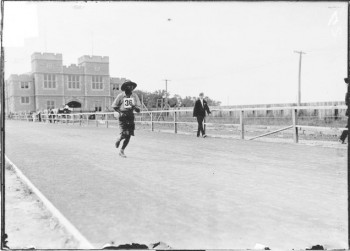
In another instance of the World’s Fair influencing the Games, two Zulu tribesmen from the Boer War exhibit joined the race, becoming the first African Olympic athletes. Although one of them was almost chased off the track by an angry dog, the two men came in ninth and twelfth place.
The St. Louis Olympics featured other remarkable moments. American gymnast George Eyser won six medals even though he had a wooden leg. Chicago runner James Lightbody set a world record by winning the 1500 meter race.
St. Louis sprinter Archie Hahn also won various foot races. And lastly, Frank Kugler remains the only Olympic athlete to come first in three different sports, winning medals in wrestling, weightlifting and tug of war.
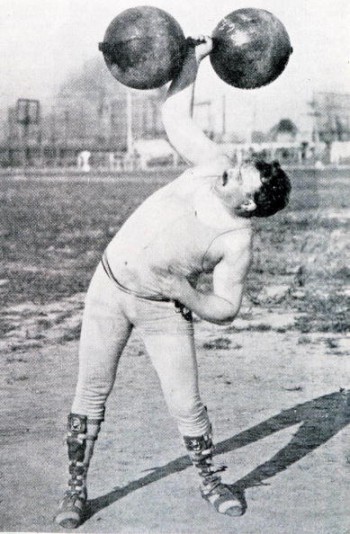
Dumbbell lifting, boxing, and decathlon made their first Olympic appearance in 1904, and that year saw the first gold medal awarded to a winning athlete. USA’s Frederick Winters won the silver medal in the dumbbell event.
Although the Danforth campus has certainly changed since 1904, the Olympics legacy continues today: university athletes still use Francis Field for sporting events. For more information, please consult the 1904 Olympics Collection. Also, be sure to peruse this Olympics and World’s Fair Research Guide.
Additionally, St. Louisians can check out the Our Olympics exhibit at the Missouri History Museum until November!
Sources: The 1904 Olympics Collection; The Hatchet, 1905. All images at University Archives unless noted.